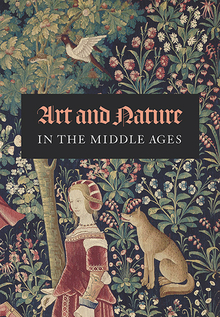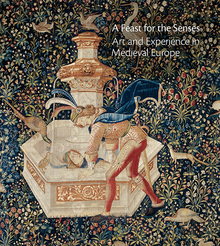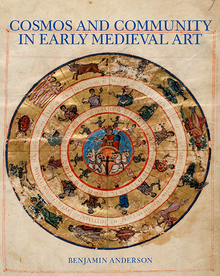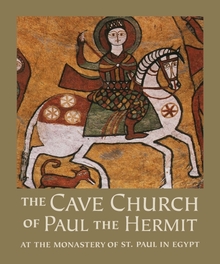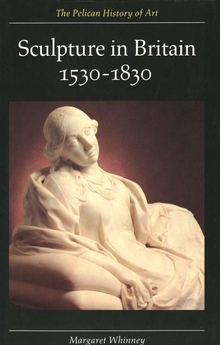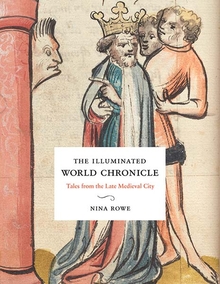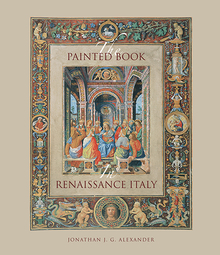Medieval Illuminators and Their Methods of Work
WARNING
You are viewing an older version of the Yalebooks website. Please visit out new website with more updated information and a better user experience: https://www.yalebooks.com

Read this book online via the A&AePortal, our art and architectural history eBook platform. To learn more about how to access this book, please contact us.
Alexander explains that in the early period, Christian monasteries and churches were the main centers for the copying of manuscripts, and so the majority of illuminators were monks working in and for their own monasteries. From the eleventh century, lay scribes and illuminators became increasingly numerous, and by the thirteenth century, professional illuminators dominated the field. During this later period, illuminators were able to travel in search of work and to acquire new ideas, they joined guilds with scribes or with artists in the cities, and their ranks included nuns and secular women. Work was regularly collaborative, and the craft was learned through an apprenticeship system. Alexander carefully analyzes surviving manuscripts and medieval treatises in order to explain the complex and time-consuming technical processes of illumination—its materials, methods, tools, choice of illustration, and execution. From rare surviving contracts, he deduces the preoccupation of patrons with materials and schedules. Illustrating his discussion with examples chosen from religious and secular manuscripts made all over Europe, Alexander recreates the astonishing variety and creativity of medieval illumination. His book will be a standard reference for years to come.
"In Medieval Illuminators and Their Methods of Work, [Alexander] proves himself to be an inspired chronicler of 1200 years of illumination. . . .Quite apart from its lively tone and accessible erudition, [this book] appeals on the strength of its many illustrations."—Christopher Hughes, Voice Literary Supplement
"The superficial similarity to more casual and general histories of illuminated manuscripts should be readily dismissed with the knowledge that the author is one of the leading academics in the field who draws on some thirty years of study. . . . It will fill a significant gap for all those working on these manuscripts. . . . Until now there was no one study which sought to bring together all the strands of research. . . . Professor Alexander's ability to draw all this information together is not to be underestimated. . . . Despite much dense information, it still has the clarity of good spoken word. The book still remains accessible. It is a work that will find its way on to many reference shelves, but can also be read by those who . . . are increasingly interested in the subject."—Liz Merry, Antiquarian Book Monthly
"This study is an invaluable resource for cultural historians, medievalists, and students of both text-image relationships and artistic processes."—Choice
"A candidate for the best book on illuminated manuscripts ever written. . . . The book is magnificent. For a sensitive understanding of the manuscript artist and an experienced and wise judgement on his miniatures, this beautifully illustrated and concisely written book is the work of a great master."—Christopher de Hamel, The Art Newspaper
"Jonathan Alexander has for long been at the forefront of the study of medieval manuscript illumination. . . . [He] has provided a clear overview of the most important areas of European book illumination. Recent scholarship is brought together with almost 250 high quality illustrations. Yale University Press has produced Professor Alexander's highly readable text in a book which is, appropriately, good to look at."—Richard Ovenden, Rare Books Newsletter
"Alexander provides an effective survey of limitations under which scribes and illuminators plied their techniques from approximately the 6th century to the end of the 15th century."—Carl H. Losse and Arlyle Mansfield Losse, Art Documentation
"Alexander possesses a consummate historical knowledge of the field of medieval illumination. One could only expect from him the thoroughly researched and documented introduction to the subject that this book so richly provides."—Stephen G. Nichols, American Historical Review
"An important survey of medieval manuscript illumination and will serve as a source of further research for many years to come."—Barbara Zeitler, Apollo Magazine
"[This book] explores in depth what can be gleaned from sources about the illuminators themselves and their patrons. . . . This detailed, well-researched volume is recommended for graduate students of art and medieval history."—Joseph Gutmann, Religious Studies Review
"Erudite, lively, and accessible. . . . Alexander's study will certainly become the reference work on the topic; however, one hopes that it will not be read by art historians alone but will also entice literary historians to acquaint themselves with the practices and discourses that made an illuminated manuscript, and therefore much medieval literature, what it is."—Brigitte Buettner, Speculum—A Journal of Medieval Studies
Publication Date: September 28, 1994


